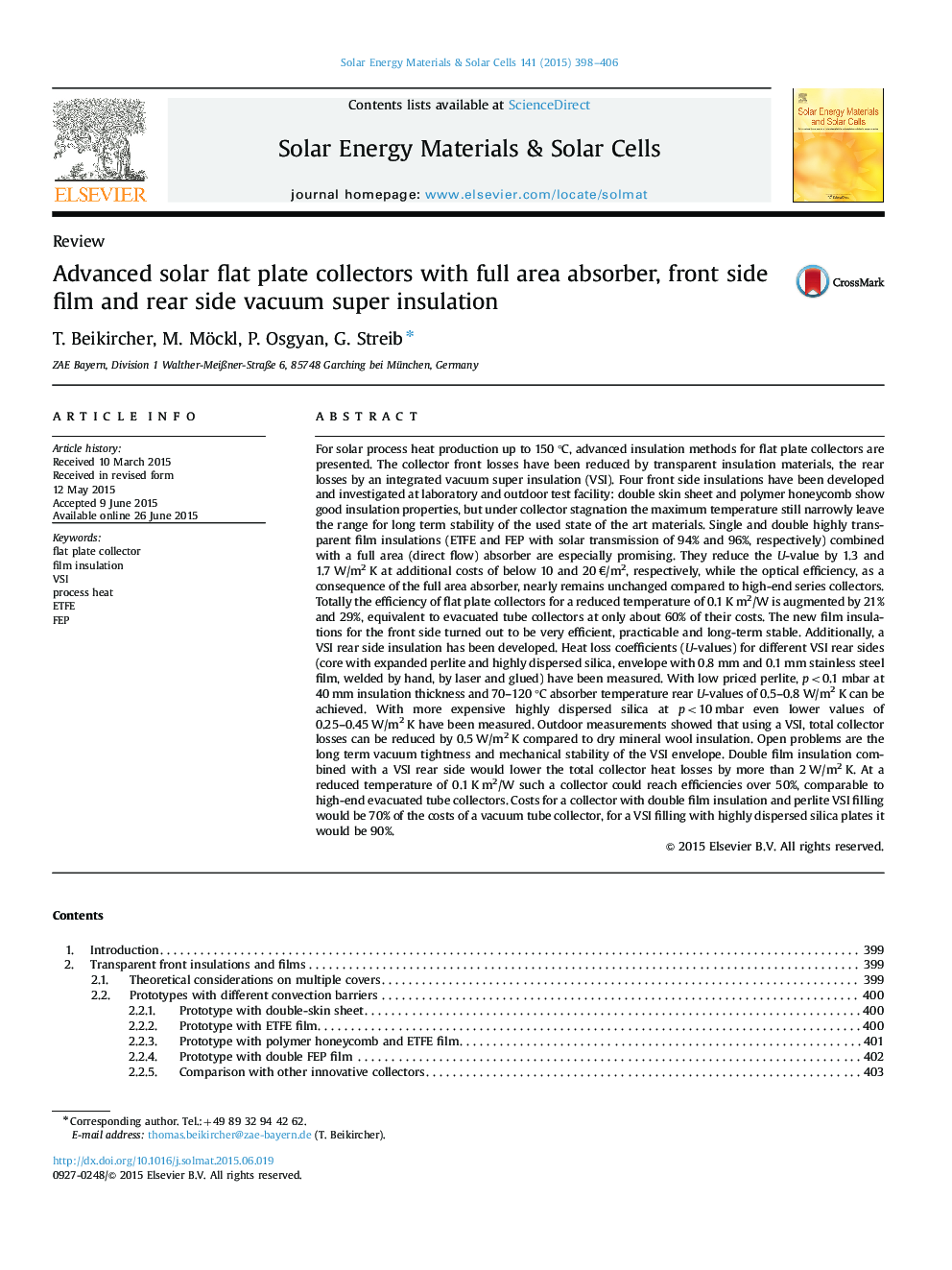| Article ID | Journal | Published Year | Pages | File Type |
|---|---|---|---|---|
| 77767 | Solar Energy Materials and Solar Cells | 2015 | 9 Pages |
For solar process heat production up to 150 °C, advanced insulation methods for flat plate collectors are presented. The collector front losses have been reduced by transparent insulation materials, the rear losses by an integrated vacuum super insulation (VSI). Four front side insulations have been developed and investigated at laboratory and outdoor test facility: double skin sheet and polymer honeycomb show good insulation properties, but under collector stagnation the maximum temperature still narrowly leave the range for long term stability of the used state of the art materials. Single and double highly transparent film insulations (ETFE and FEP with solar transmission of 94% and 96%, respectively) combined with a full area (direct flow) absorber are especially promising. They reduce the U-value by 1.3 and 1.7 W/m2 K at additional costs of below 10 and 20 €/m2, respectively, while the optical efficiency, as a consequence of the full area absorber, nearly remains unchanged compared to high-end series collectors. Totally the efficiency of flat plate collectors for a reduced temperature of 0.1 K m2/W is augmented by 21% and 29%, equivalent to evacuated tube collectors at only about 60% of their costs. The new film insulations for the front side turned out to be very efficient, practicable and long-term stable. Additionally, a VSI rear side insulation has been developed. Heat loss coefficients (U-values) for different VSI rear sides (core with expanded perlite and highly dispersed silica, envelope with 0.8 mm and 0.1 mm stainless steel film, welded by hand, by laser and glued) have been measured. With low priced perlite, p<0.1 mbar at 40 mm insulation thickness and 70–120 °C absorber temperature rear U-values of 0.5–0.8 W/m2 K can be achieved. With more expensive highly dispersed silica at p<10 mbar even lower values of 0.25–0.45 W/m2 K have been measured. Outdoor measurements showed that using a VSI, total collector losses can be reduced by 0.5 W/m2 K compared to dry mineral wool insulation. Open problems are the long term vacuum tightness and mechanical stability of the VSI envelope. Double film insulation combined with a VSI rear side would lower the total collector heat losses by more than 2 W/m2 K. At a reduced temperature of 0.1 K m2/W such a collector could reach efficiencies over 50%, comparable to high-end evacuated tube collectors. Costs for a collector with double film insulation and perlite VSI filling would be 70% of the costs of a vacuum tube collector, for a VSI filling with highly dispersed silica plates it would be 90%.
